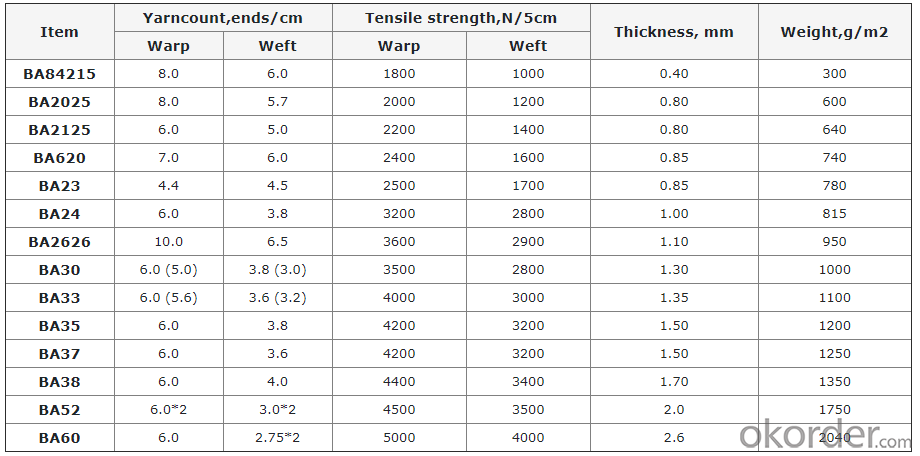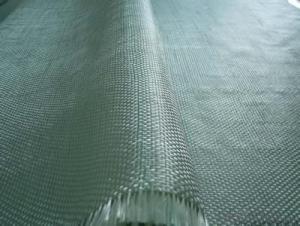High Temperature Resistant Acrylic Coated Fiberglass Fabric
- Loading Port:
- Ningbo
- Payment Terms:
- TT OR LC
- Min Order Qty:
- 500 m²
- Supply Capability:
- 300000 m²/month
OKorder Service Pledge
OKorder Financial Service
You Might Also Like
Description: The acrylic coated glass fiber cloth overcomes the shortcomings of glass fiber cloth that is not wear-resistant, itchy, and easy to loose yarn after cutting, so that our fire resistant cloth als and performs processing on the glass fiber cloth. It has better wear resistance, easy processing and aesthetic properties. Acrylic coated cloth can withstand higher operating temperatures. Acrylic texture stabilizer with high quality is flame-retardant, low-smoke, temperature resistance of 550 C, feels moderately soft and hard, and has a reasonable cost. Therefore, this coated fabric can be made into welding blanket, insulation covers, fire blanket, fire curtain, fireproof cloth for fire protection. In high temperature operations such as heat preservation, welding protection, fire protection, steel, shipbuilding industry, etc.
Features: Fireproof, Abrasion Resistance, Corrosion Resistance
Application: Fire Blanket, Welding Blanket, Insulation Blanket, Fire Curtain, Welding Curtain, Smoke Curtain, Fire Doors

UNIT: square meter
MOQ: 500 square meters
Weight: 140gsm-3000gsm or customized
Width: 1m-2m or customized
Yarn Type: E-glass
Standing temperature: up to 550℃
Product name: Acrylic coated fiberglass fabric
Coating/Finish/Surface Treatment: Acrylic coated
Roll length: 50 meter or customized
Color: Yellow,Black,White,Brown,Blue,Orange,Gray,Salmon,Red or customized
Weave Type: plain woven
Alkali content: alkali free
Processing service: cutting
Material: fiberglass fabric, Acrylic
Thickness: 0.1mm to 3mm or customized
Size: can be customized
Supply ability: 300000 meters per month
Packaging: Acrylic coated fiberglass fabric rolls covered with film packed in cartons loaded on pallets or according to customers' requirements.
Lead time: 7-30 days
- Q:How to deal with cracks in floor construction joints?
- The cracks that do not affect the safety of the structure shall be used in combination with the following methods:Chemical grouting: suitable for through cracks, the use of special pressure equipment, the chemical pulp into the hydraulic pressure, the general chemical grout for epoxy resin, polyurethane and so on.In the original position of the crack sealing slot slot, groove clean, sealing material for fill block, sealing material with epoxy grout, sealing compound, polymer mortar etc..
- Q:What is the typical lead time for ordering fiberglass fabrics?
- The typical lead time for ordering fiberglass fabrics can vary depending on the supplier and the specific product. However, it is common to expect lead times ranging from a few days to a couple of weeks. It is advisable to contact the supplier directly to get an accurate estimate for the particular fiberglass fabric being ordered.
- Q:What are the different fiberglass fabric weaves for flexibility?
- There are several different fiberglass fabric weaves that provide flexibility. Some of the most common ones include plain weave, twill weave, satin weave, and leno weave. Plain weave is the most basic and simple weave pattern, where each warp thread alternates over and under each weft thread in a grid-like formation. This weave offers good flexibility and is often used for lightweight applications. Twill weave is characterized by a diagonal pattern created by the interlacing of warp and weft threads. This weave provides greater flexibility and strength compared to plain weave, making it suitable for applications that require more durability. Satin weave is known for its smooth and shiny appearance. It has long floats, meaning fewer interlacements between warp and weft threads. Satin weave offers excellent flexibility and drapability, making it a popular choice for applications that require a soft and flexible material. Leno weave is a unique weave pattern where warp threads are twisted around adjacent weft threads to create an open and flexible mesh-like structure. This weave provides high flexibility and breathability, making it ideal for applications such as filtration and reinforcement. Overall, the choice of fiberglass fabric weave for flexibility depends on the specific requirements of the application. Each weave offers different levels of flexibility, strength, and appearance, allowing manufacturers to select the most suitable option for their particular needs.
- Q:How does fiberglass fabric handle moisture?
- Fiberglass fabric has excellent resistance to moisture and is considered to be highly water-resistant. Due to its composition of woven glass fibers, it does not absorb water and is unaffected by moisture or humidity. This makes fiberglass fabric ideal for applications where exposure to moisture is expected, such as boat hulls, outdoor furniture, and building materials. Additionally, fiberglass fabric does not promote the growth of mold or mildew, further enhancing its ability to handle moisture.
- Q:What's the quality of waterproof made of fiberglass fabric and waterproof coating?
- Terrace with waterproof coating, flexible waterproof better, but the cost slightly higher, glass fiber cloth cheap, but the quality is worse
- Q:Can fiberglass fabric be used for making sails or kites?
- Fiberglass fabric is suitable for the production of sails and kites, as it is a lightweight and durable material commonly utilized in various industries such as marine and aerospace. Its exceptional strength and ability to resist tearing and stretching make it an excellent choice for constructing sails and kites. Furthermore, the water-resistant properties of fiberglass fabric are essential for sails that will be exposed to moisture. The flexibility of fiberglass fabric also enables it to be molded and shaped into the desired form, making it perfect for creating the aerodynamic shapes necessary for sails and kites. In conclusion, the strength, durability, water resistance, and flexibility of fiberglass fabric make it a suitable material for the fabrication of sails and kites.
- Q:How is fiberglass fabric used in the production of windbreakers?
- Windbreakers often incorporate fiberglass fabric due to its unique properties that make it suitable for this purpose. Lightweight, durable, and able to withstand harsh weather conditions, fiberglass fabric offers all the qualities needed for windbreaker production. To reinforce windbreakers, fiberglass fabric is commonly used as a material. It is incorporated into specific areas like the shoulders, elbows, or hood to provide extra strength and durability. Acting as a protective layer, fiberglass fabric prevents tears or rips in these high-stress areas, resulting in a longer-lasting and more efficient windbreaker. The thermal insulation properties of fiberglass fabric are also well-known. Windbreakers are designed to keep wearers warm and comfortable in windy or chilly weather, and fiberglass fabric plays a significant role in achieving this goal. By acting as a barrier against wind, it prevents it from penetrating the fabric and stealing body heat. This insulation property helps retain the warmth generated by the body, ensuring the wearer stays cozy even in harsh weather conditions. Furthermore, the lightweight nature of fiberglass fabric is essential for windbreaker production. Windbreakers are typically designed to be portable and easy to carry, making them ideal for outdoor activities like hiking or camping. With fiberglass fabric being lightweight, it ensures the windbreaker remains comfortable and doesn't add unnecessary bulk to the wearer. Lastly, fiberglass fabric is water-resistant, which is another crucial feature for windbreakers. It repels water and keeps wearers dry during light rain or drizzles. This property is particularly important for outdoor enthusiasts or individuals engaging in activities in damp or unpredictable weather conditions. In conclusion, fiberglass fabric is utilized in windbreaker production due to its reinforcement capabilities, thermal insulation properties, lightweight nature, and water resistance. These qualities make fiberglass fabric an excellent choice for ensuring durability, comfort, and protection from wind and other weather elements in windbreaker designs.
- Q:How does fiberglass fabric compare to other fabric materials in terms of cost?
- Fiberglass fabric tends to be more expensive compared to other fabric materials.
- Q:Can fiberglass fabrics be used for upholstery or furniture applications?
- Yes, fiberglass fabrics can be used for upholstery or furniture applications. Fiberglass fabrics are known for their durability, strength, and resistance to heat and chemicals. These qualities make them suitable for various applications, including upholstery and furniture. Fiberglass fabrics can be used as a reinforcement material for padding or cushioning in furniture, providing added support and longevity. Additionally, fiberglass fabrics can be used as a covering material for furniture, as they are resistant to stains, mold, and mildew. Overall, fiberglass fabrics offer a versatile and durable solution for upholstery and furniture applications.
- Q:What are the different fiberglass fabric finishes for chemical resistance?
- There are several different fiberglass fabric finishes available for chemical resistance, including silicone, PTFE (polytetrafluoroethylene), neoprene, and vinyl. These finishes are applied to the fiberglass fabric to provide a protective barrier against various chemicals, making the fabric suitable for use in industries such as chemical processing, oil and gas, and wastewater treatment. Each finish offers different levels of resistance to specific chemicals, so the choice of finish will depend on the specific needs and requirements of the application.
1. Manufacturer Overview |
|
|---|---|
| Location | |
| Year Established | |
| Annual Output Value | |
| Main Markets | |
| Company Certifications | |
2. Manufacturer Certificates |
|
|---|---|
| a) Certification Name | |
| Range | |
| Reference | |
| Validity Period | |
3. Manufacturer Capability |
|
|---|---|
| a)Trade Capacity | |
| Nearest Port | |
| Export Percentage | |
| No.of Employees in Trade Department | |
| Language Spoken: | |
| b)Factory Information | |
| Factory Size: | |
| No. of Production Lines | |
| Contract Manufacturing | |
| Product Price Range | |
Send your message to us
High Temperature Resistant Acrylic Coated Fiberglass Fabric
- Loading Port:
- Ningbo
- Payment Terms:
- TT OR LC
- Min Order Qty:
- 500 m²
- Supply Capability:
- 300000 m²/month
OKorder Service Pledge
OKorder Financial Service
Similar products
New products
Hot products
Hot Searches
Related keywords





























